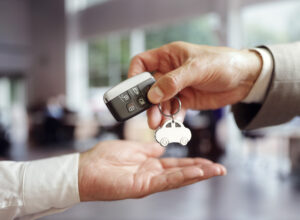There are few things more irritating than a driver crashing into your car and fleeing the scene. Worse than that is when, in addition to damage to your vehicle, the accident involves injuries or deaths and the driver at fault does not provide any assistance. This is called a hit-and-run in the US and most state laws make it a misdemeanor or felony.
Whether considered a misdemeanor or felony, a hit-and-run can result in criminal charges, fines, prison sentences, loss of employment, and more.
If the other driver cannot be identified, you will likely have to pay for the expenses resulting from the accident. However, if you have full auto insurance coverage or Uninsured Motorist Coverage, damage to you and your property may be covered under your policy.
Statistics for hit-and-runs in the US
According to the national study by the AAA Foundation for Traffic Safety, we have separated important data to consider:
- Hit-and-runs accounted for more than 5% of traffic fatalities.
- There is an average increase of 7.2% in this type of accident every year.
- Runaway drivers were responsible for 20% of pedestrian deaths.
- 68% of people killed due to hit-and-runs were pedestrians and cyclists.
- In 2015, there were 737,100 hit-and-run accidents.
- 2,049 people died in hit-and-runs in 2016 – a 60% increase since 2009.
There are nearly six deaths a day and more than one hit-and-run per minute on US roads.
When you find yourself involved in an accident of this type, the questions might arise: what do I do in a situation like this? How can I protect the people involved, our assets and our pockets?
Below is a step-by-step guide so you know exactly what to do if this were to happen to you.
Call 911
Not every hit-and-run is tragic and painful (thankfully so!), but if you and/or your passenger have been injured, call 911 immediately. If you are unable to make that call, ask a witness or passerby for help.
Make sure everyone is safe and secure and do not leave the scene of the accident before the police arrive. It is important to provide as much information as possible, such as a description of the vehicle and the type of injury. The speed with which you call for help can make all the difference.
Even if there are no injuries, it is important to call the police and report the incident. After the officer records the accident, ask for a copy of the report. Your insurer may require a police report before you are able to file a claim.
Gather and record important information
There is information necessary to have in the event of an accident where the culprit runs away, so gather as much data as you can to include in the police report.
Of course, we won’t always be able to get all this information, but we encourage you to speak with any witnesses and try to gather as much of this information as possible:
- Plate number
- The make, model and color of the other vehicle
- Description of the other driver
- Direction the other vehicle was driving
- Place, time and cause of the accident
- Photos of damage to your vehicle, especially if the paint on the other car is visible where the impact occurred
- Pictures of the accident scene
- Description of damage to other vehicle
These details will help authorities locate the driver who fled the scene. If the accident happened in a parking lot, without your presence, you can search for images from the local camera circuit, whether public or private. Also document the damage to your vehicle as it will be needed as evidence during reporting.
Inform your Insurance
Just as important as calling the police is informing your insurance company of what happened. You are not required to register immediately after the accident, but we advise you to do so as soon as possible. This step is extremely important, especially if you are going to file a claim, as well as ensuring that your memory is fresh and you are able to record it in as much detail as possible.
Also, contact your insurance broker for more details on how to proceed and to understand whether or not your coverage will cover the incident.
If you need a tow, this is a good time to contact your roadside assistance provider, if you have one.
DO NOT chase the runaway driver!
This is something that won’t actually help you at all! In addition to the risk of causing a new accident, or having to face a violent driver, leaving the scene is always a bad idea. You may miss the chance to take testimony, speak to witnesses, and get information you wouldn’t be able to get by chasing a car across town.
Will insurance cover a hit-and-run?
If you are involved in a hit-and-run, your auto insurance policy may cover some expenses, but exactly what will be covered and how you will be compensated depends on your coverage. See which ones can help:
- Collision: covers damage to your own car. Although it is not your fault, you will lose the deductible. Unless the offending driver is found, in which case they may be required to pay the deductible and you can get a refund of that amount.
- Uninsured Motorist: Uninsured Motorist Coverage helps pay for medical expenses, lost wages, or damage to your car if the driver at fault does not have insurance or succeeds in getting away. Your insurer may require proof that the other driver was uninsured, which may or may not be possible after the escape.
- Uninsured Motorist Property Damage: Again, this insurance can help with damage to your car or other property, but there may be restrictions on its use depending on your insurance company.
- Personal Injury Protection (PIP): pays for medical payments, salaries and more, no matter who is at fault in the accident (depending on your state).
Your Breezy Seguros agent is your best resource if you find yourself in this unfortunate situation. We are always on hand to plan your coverage and avoid future headaches, as well as to help you find the best ways to reduce damage when the accident has already happened.Give us a call today!








